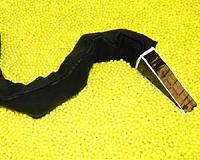| . |  |
. |
Fukushima City, Japan (AFP) May 11, 2011 Two months after Japan's quake and tsunami sparked an atomic disaster, Emperor Akihito and Empress Michiko visited Fukushima on Wednesday to comfort hundreds of nuclear evacuees. The royal couple knelt on the hard floor of the Azuma Sports Park arena to talk with people who have not seen their homes and farms since the March 11 calamity destabilised nuclear reactors and sparked a rapid exodus. "Are you well?" the 77-year-old Akihito -- officially Japan's living "symbol of the state and the unity of the people" -- asked an elderly woman, one of more than 600 people living at the shelter. "Take good care of your health," he told another. Nearly 100,000 Fukushima prefecture residents remain without permanent housing, and 60,000 of them live in gyms, schools and other shelters, mostly enduring cramped and trying conditions with little privacy. Many of them are grieving for loved ones. Japan's worst post-war calamity killed 14,949 people and left 9,880 others officially missing. The massive ocean wave knocked out cooling systems at the Fukushima Daiichi plant, which has been releasing radioactive materials since, forcing the government to designate a 20-kilometre (12-mile) no-go area around it. Many evacuees are haunted by fears over the long-term exposure to the radiation still wafting out of the plant some 60 kilometres (38 miles) away, and many parents ban their children from spending too much time outdoors. The imperial couple previously visited tsunami survivors in nearby prefectures, but Wednesday's trip was their first to the area directly affected by the world's worst nuclear accident since Chernobyl 25 years ago. As their bus drove up to the gym's entrance, Akihito and Michiko kept their windows open to wave at some 200 evacuees waiting for them outside. The crowd sighed as Michiko, a former commoner who married into the imperial household, slowly disembarked, escorted by her husband. She is a beloved figure, especially among the elderly as her public life spans the era in which Japan rose from the ashes of World War II through years of hardship to economic success. "Michiko-sama (Your Majesty Michiko), are you well?" a middle-aged woman yelled out as the couple calmly smiled and waved at the well-wishers. Another evacuee, Kikue Shoji, 77, exchanged a few words with Akihito, but said she was also eager to catch a glimpse of Michiko. When she stood up to look around, her eyes caught those of the empress. Without thinking much, Shoji walked up and tightly held the empress' hands. "We were born in the same year (1934)," said Shoji, who wore a purple apron over a casual pairs of pants. "Yes, the same year. There was the war," came the gentle reply from Michiko, dressed in a pale gray jacket. "We have lived through the same generation together." The imperial couple later visited the coastal town of Soma north of the plant, to also visit families there and see the damage done by tsunami. Shoji later said the imperial visit had renewed her resolve to hang tough and endure the current difficulties. "There is nothing I can do other than to stay put. I never dreamed of seeing the majesties," she said. Fukushima Mayor Takanori Seto said the imperial visit had lifted spirits. "In reality, evacuees are going through serious pain. They want to go home. But in front of their majesties, they said 'Yes, we are OK.' I was moved by that," the mayor told reporters. "At evacuation shelters, people are worried because they don't know what will happen to them in the future," he said. "The nuclear plant has to be stabilised as soon as possible." Seto called on the government to build a world-class medical institute in Fukushima to study the long-term effects of radiation on human health.
Share This Article With Planet Earth
Related Links Bringing Order To A World Of Disasters A world of storm and tempest When the Earth Quakes
 Tiltable head improves ability of robots to navigate disaster debris
Tiltable head improves ability of robots to navigate disaster debrisAtlanta GA (SPX) May 11, 2011 Search and rescue missions have followed each of the devastating earthquakes that hit Haiti, New Zealand and Japan during the past 18 months. Machines able to navigate through complex dirt and rubble environments could have helped rescuers after these natural disasters, but building such machines is challenging. Researchers at the Georgia Institute of Technology recently built a robot that ... read more |
|
| The content herein, unless otherwise known to be public domain, are Copyright 1995-2010 - SpaceDaily. AFP and UPI Wire Stories are copyright Agence France-Presse and United Press International. ESA Portal Reports are copyright European Space Agency. All NASA sourced material is public domain. Additional copyrights may apply in whole or part to other bona fide parties. Advertising does not imply endorsement,agreement or approval of any opinions, statements or information provided by SpaceDaily on any Web page published or hosted by SpaceDaily. Privacy Statement |